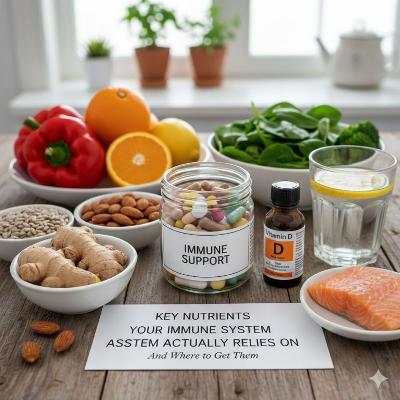In 2019 alone, more than 39 million people suffered preventable injuries in the home and community. You never know when an accident will occur, even when doing the most mundane tasks at home, and it helps to be prepared.
The best way to do this is by putting together a DIY first aid kit that you can easily access when disaster strikes. But what should you include in a basic first aid kit? We’re here to help.
Keep reading our first aid kit list to learn what to put in your kit.
Basic Over-the-Counter Medications
Minor ailments like headaches and stomachaches can often be treated with over-the-counter medications like acetaminophen and bismuth subsalicylate. It’s a good idea to keep these along with ibuprofen, antihistamines, and cough suppressants in your emergency kit.
However, keep in mind that these medications should only be used for minor incidents. If a loved one hits their head, for instance, acetaminophen may not be enough to help. Instead, be on the lookout for concussion signs and symptoms to see if they need medical treatment.
Antiseptic
Small cuts and scrapes are one of the most common household injuries, so be prepared with an antiseptic to help prevent an infection from developing.
An antiseptic can help remove dirt and debris from an open wound and often comes in a misting spray or cream form. Some antiseptic options also offer pain relief, which can help even more.
Bandages and Gauze
There’s nothing worse than slicing your finger when cooking only to realize that you’re out of bandages. Make sure your first aid kit is fully stocked with a variety of different bandage sizes so you’re always prepared. You’ll also want a few water-resistant bandages, especially for finger wounds, so you can continue to wash your hands without the bandage falling off.
For more serious wounds, you may need gauze, so keep a roll of gauze or gauze pads in your kit as well. You should also get some adhesive tape to help keep it in place.
Handy Tools
Your first aid kit should also include a variety of tools like scissors, tweezers, and gloves so that you have everything you might need in one place.
Gloves come in many forms. The most common is latex. However, latex gloves are made of natural rubber proteins that can cause skin allergies. Also, they cannot guarantee complete chemical protection against some organic solvents. If you have sensitive skin and want to feel more secure, nitrile gloves are a better alternative.
Like ordinary gloves, nitrile gloves also come in varieties. You can opt for standard, powdered, or powder-free. You can also have them in different colors. Regardless of your preference, nitrile gloves are ideal in any situation. You can use it for medical purposes, like administering first aid, or for personal reasons, like cleaning your home.
Scissors can help cut gauze or even clothing in the event of an accident. Tweezers can remove splinters, and gloves help keep you protected if you’re administering first aid to someone else. Don’t forget a digital thermometer in your first aid kit as well, so you can monitor fevers.
Emergency Contact Information
In the event of an accident, you might not be able to think clearly. So, make it easier by keeping emergency phone numbers in your first aid kit as well. At a minimum, put the poison control number and your primary doctor’s number on an index card in the kit.
You can also include any potential emergency contacts like close friends or family members.
Create Your DIY First Aid Kit
After reading through this list, you’re ready to put together your own DIY first aid kit. By creating your kit ahead of time, you’ll be prepared the next time an accident occurs at home.
Want to read more lifestyle content like this? Browse our other articles today and check back often for new content.






